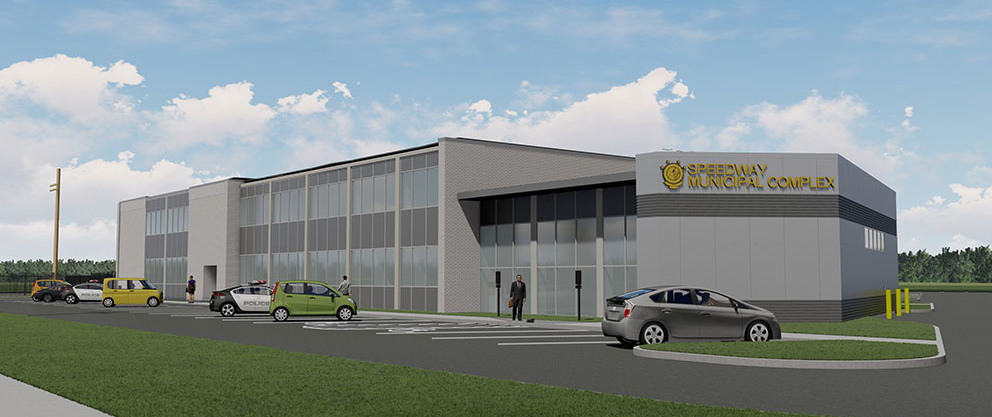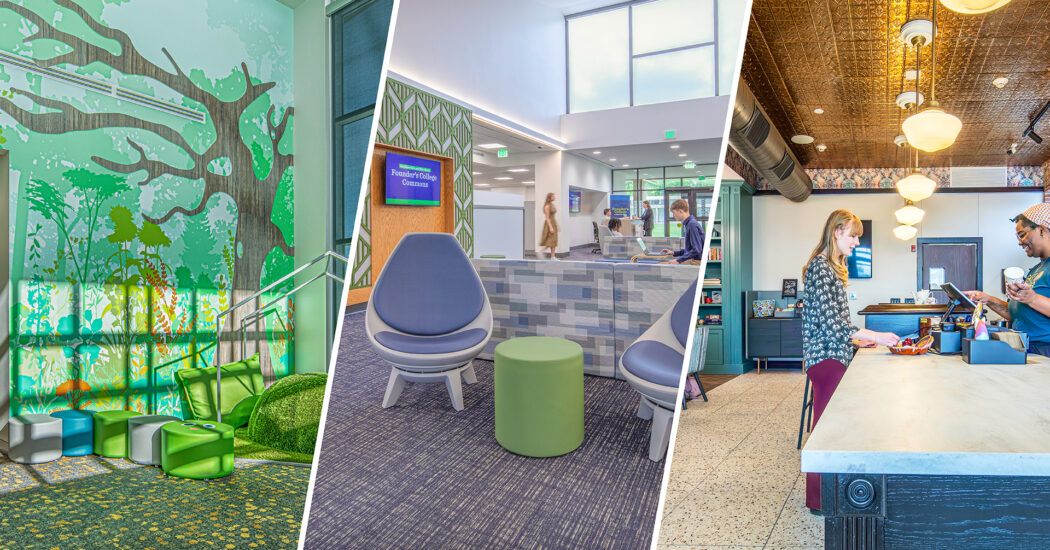4 Things to Consider When Designing a Police Station
-
Category
Studio-Community -
Posted By
Brad Brutout -
Posted On
Mar 10, 2020

Speedway Municipal Complex and Police Station
There is no template or formula for a successful police station design. Many stations have similar components or core functions, but personnel use them in different ways and need them to perform to different standards.
For example, it’s safe to say every police department needs an evidence room. Based on their operations and case load, however, their needs will vary. One department may need an 800 sq. ft. room, while another needs 3,000 sq. ft. for evidence storage.
A department’s needs, wants, and vision for the future—as well as the future of the community they serve—all inform their building’s design. So where do you start? There are a few important things to consider early when planning for a new law enforcement facility.
![]()
#1 – Police Station Location
Location of a new police headquarters or station is key to its ability to serve the community. Oftentimes, citizens want to feel close to the station or want it to be a visible and accessible part of the neighborhood or city—not an unapproachable place at the edge of town. This makes them feel safer and more connected to the force.
If you are looking for a new site, it’s also important to consider your call volume and where your force is most active. What possible obstacles exist for a particular spot? Are there active train tracks nearby? A busy school? While officers spend most of their time in their vehicles, consider the ease with which they can access the station for roll call, training, and other functions, as well as accessibility to those you serve.
The physical plot of land is also important. If you currently own a site that you want to rebuild on, is it large enough to accommodate the way your department operates today, compared to when it was purchased? Is there room for an addition or larger building footprint? Will there be space for expansion in the future if necessary?
Also think about other properties your department owns, such as storage facilities or ancillary training facilities. Are these things that could be consolidated onto a new site to centralize your operations and save money?
Some police headquarters are located in a municipal complex with other city functions, such as clerk, mayor, or even school administration offices. This can be a viable option to save on cost. However, if you are considering this approach, make sure it is appropriate for your department’s operations, growth potential, and future space needs. It can be much harder to expand down the road when sharing a site with other offices.
![]()
#2 – Different Building Uses
Law enforcement facilities are unique because of their dramatically different user groups. This can include officers, detectives, administrative staff, public safety communications/dispatch personnel, individuals in police custody, and the general public.
This means you must consider a wide variety of uses for your building—both current and future—as well as what type of space (and how much of it) those uses require to be effective. This could include:
- Large group instruction
- Tactical training
- Forensics labs
- Evidence storage
- 911 dispatch / public safety communications
- Holding cells
- Interview rooms
- Secure areas for police and tactical vehicles
- Sally port and secure inmate transfer
- Roll call and staff meeting space
- A place for ceremonies or department recognition events
- Kitchen or café area
- Workout facilities
- Space to meet with community groups or members
- Public entrance and lobby
Your building’s design and flow should cater to your processes and procedures, making operations easier and more efficient. While there is a place for aesthetically pleasing design in a police station, function is the first priority. Design should never impede the job that needs to be done.
#3 – Technology Needs
A crucial component of an effective police station is technology system design. The devices, software, and systems that police departments use are evolving. From dispatch to patrol to forensics, consider all of the systems you need in place and operational as soon as you move in.
Also consider how these tools—or how you use them—can change. Do you have plans to update or phase out equipment you are currently using? What does this look like if the force grows? Work with your technology and design team to accurately estimate what kind of space you need for storage, charging, and maintenance today and in the future.
Be sure to think about how you are collecting and using the output from your equipment. What network capabilities do you need for transferring and storing data, such as from vehicle and body cameras?
When designing conference and workspaces, consider the tools your team needs to do their job every day. Make decisions about video conferencing, virtual reality training equipment, and other technology tools during the design phase.
And of course, establishing the appropriate station security infrastructure is critical. This includes your secure entrances, building key card access, security cameras, etc.
#4 – Connection with the Community
Police station design is no longer just about building a secure, operational building. More than ever before, integration and relationship building with the community is a significant component of effective law enforcement. Consider how you can connect your new space with the community surrounding it, while maintaining the necessary level of security.
Are there shared spaces you can create to increase your reach into the neighborhood? This might include a gym for use by all municipal employees, a parking garage open to the public, or a green space or a basketball court accessible to passersby.
The more you can provide benefits for and connectivity with citizens, the more buy in and support you will have for your construction project. This can also earn more support for your department as a whole by increasing opportunities for interaction with those you protect and serve.







